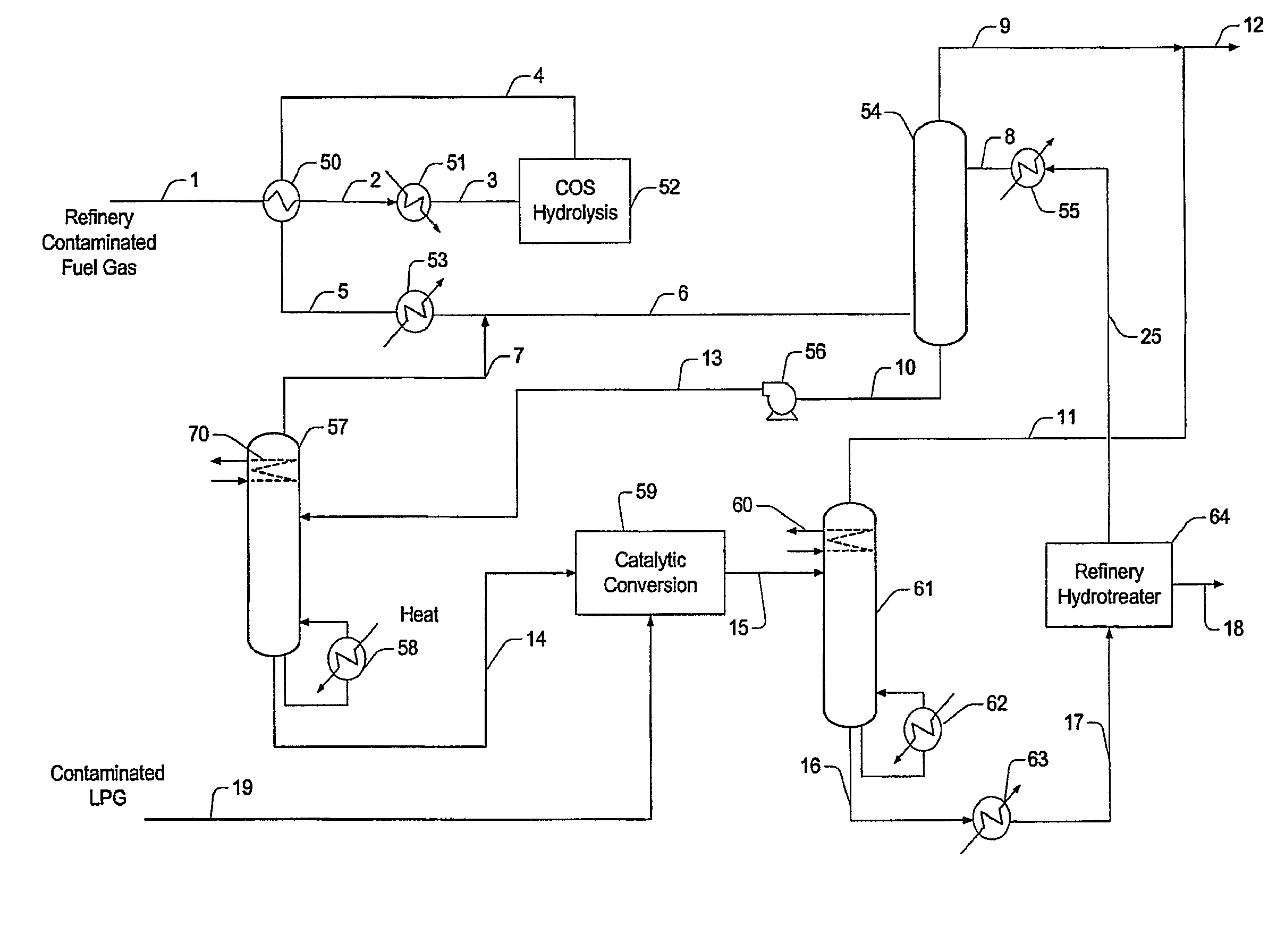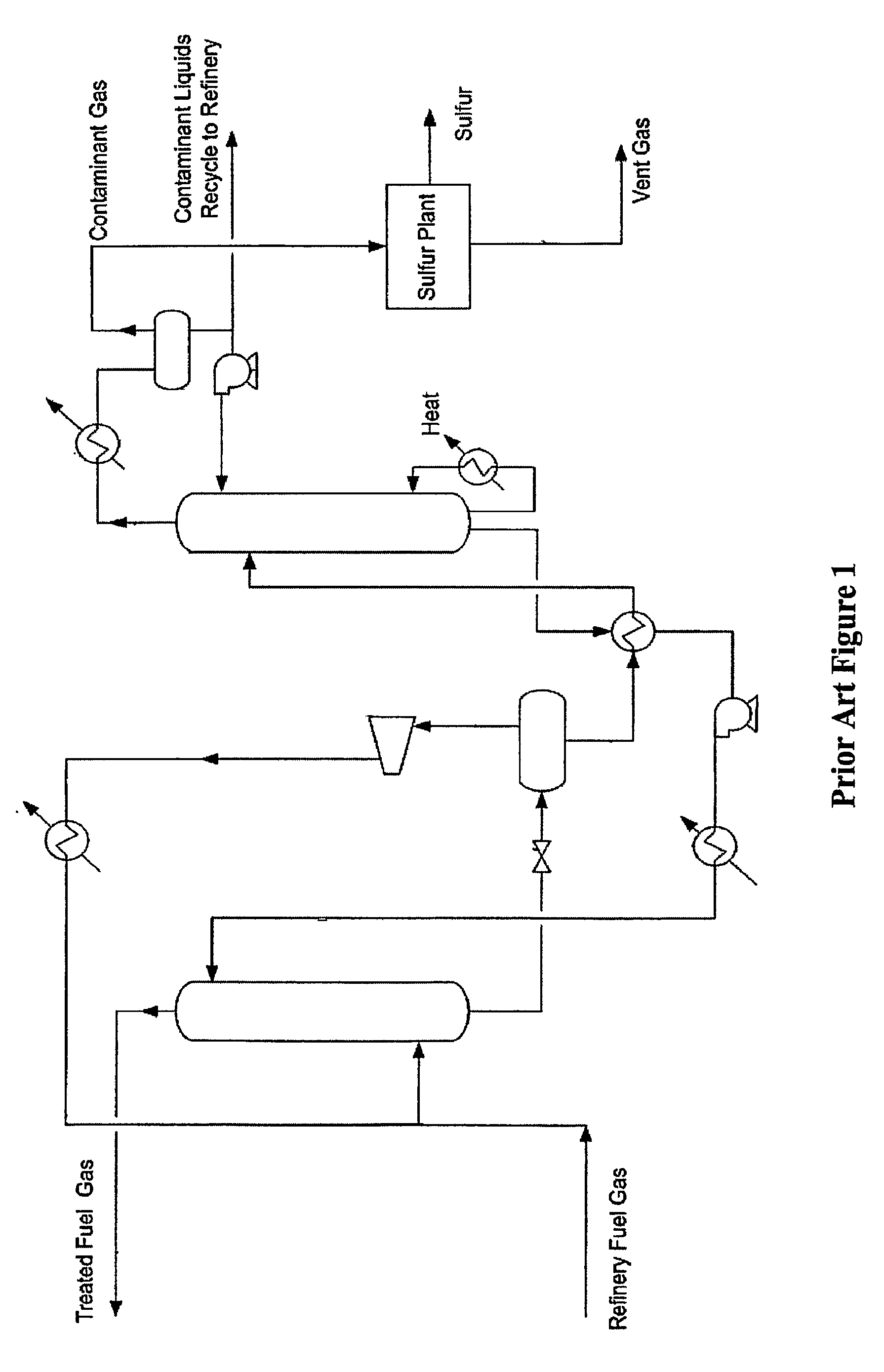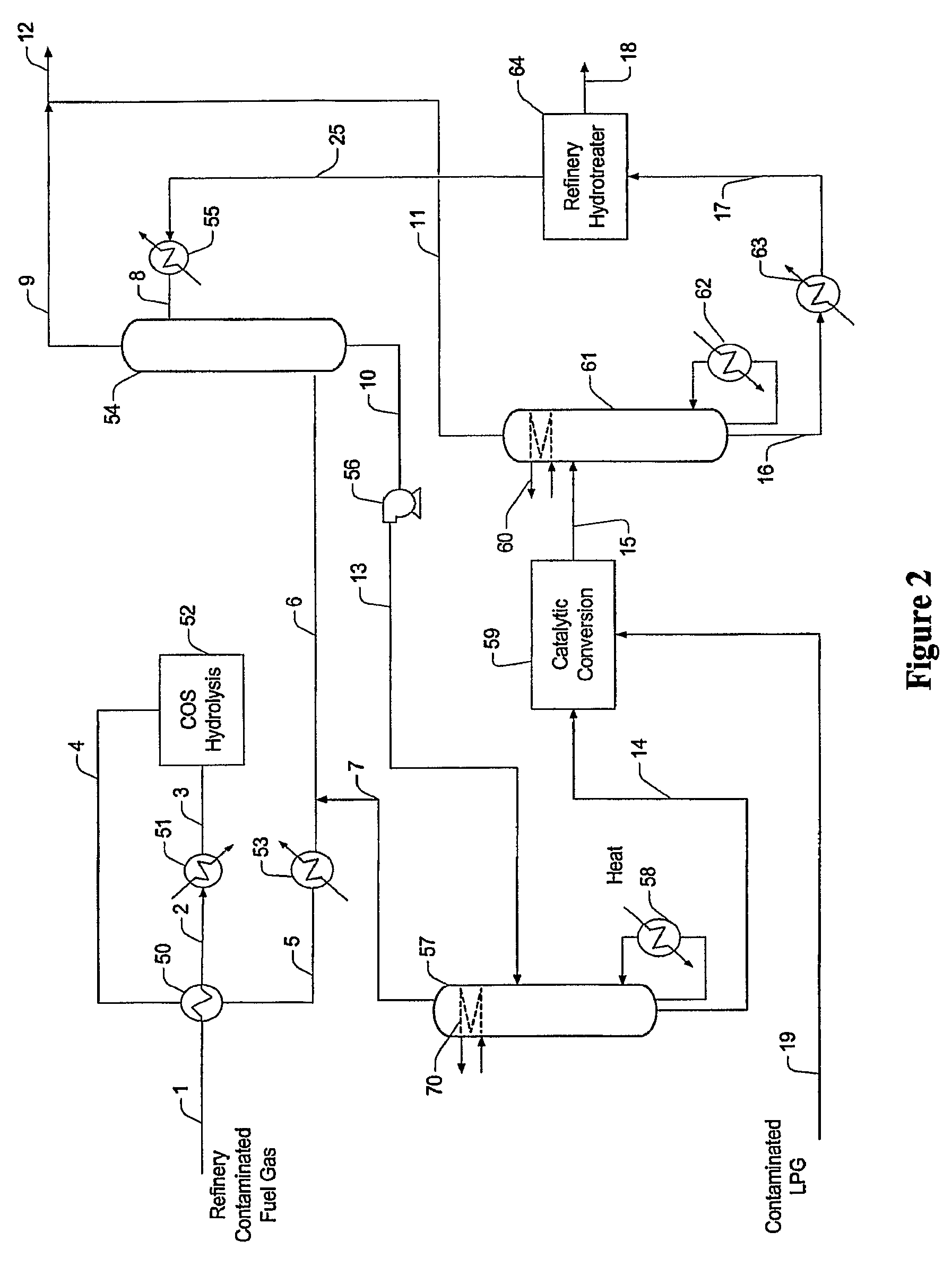Configurations and methods for removal of mercaptans from feed gases
a technology of mercaptan and feed gas, which is applied in the direction of gaseous fuels, machines/engines, combustible gas production, etc., can solve the problems of reducing the life of sulfur plants, overburdening process equipment, and conversion problems
- Summary
- Abstract
- Description
- Claims
- Application Information
AI Technical Summary
Benefits of technology
Problems solved by technology
Method used
Image
Examples
Embodiment Construction
[0018]The present invention is directed to plant configurations and methods for treatment of a gas stream (e.g., refinery gas, fuel gas) comprising COS, acid gases, olefins, oxygen, heavy hydrocarbons, mercaptans (e.g., methyl, ethyl, propyl, butyl and heavier mercaptans), and / or organic sulfur contaminants, wherein the contaminants are first subjected to a COS hydrolysis stage, and wherein the so treated contaminants are then absorbed in an absorber that employs a solvent in which the H2S and the mercaptans are preferentially absorbed over light hydrocarbons (C1 to C4, inclusive). Light hydrocarbons carried over from the absorption step are removed from the solvent in a first distillation column and preferably fed back to the absorber. The rich solvent now containing the heavier hydrocarbons (C5+), H2S, and mercaptans is then subjected to an oxidative step to produce a disulfide-containing waste product, and remaining solvent with heavier components, which can then be processed in ...
PUM
| Property | Measurement | Unit |
|---|---|---|
| temperature | aaaaa | aaaaa |
| temperature | aaaaa | aaaaa |
| corrosion | aaaaa | aaaaa |
Abstract
Description
Claims
Application Information
 Login to View More
Login to View More - R&D
- Intellectual Property
- Life Sciences
- Materials
- Tech Scout
- Unparalleled Data Quality
- Higher Quality Content
- 60% Fewer Hallucinations
Browse by: Latest US Patents, China's latest patents, Technical Efficacy Thesaurus, Application Domain, Technology Topic, Popular Technical Reports.
© 2025 PatSnap. All rights reserved.Legal|Privacy policy|Modern Slavery Act Transparency Statement|Sitemap|About US| Contact US: help@patsnap.com



